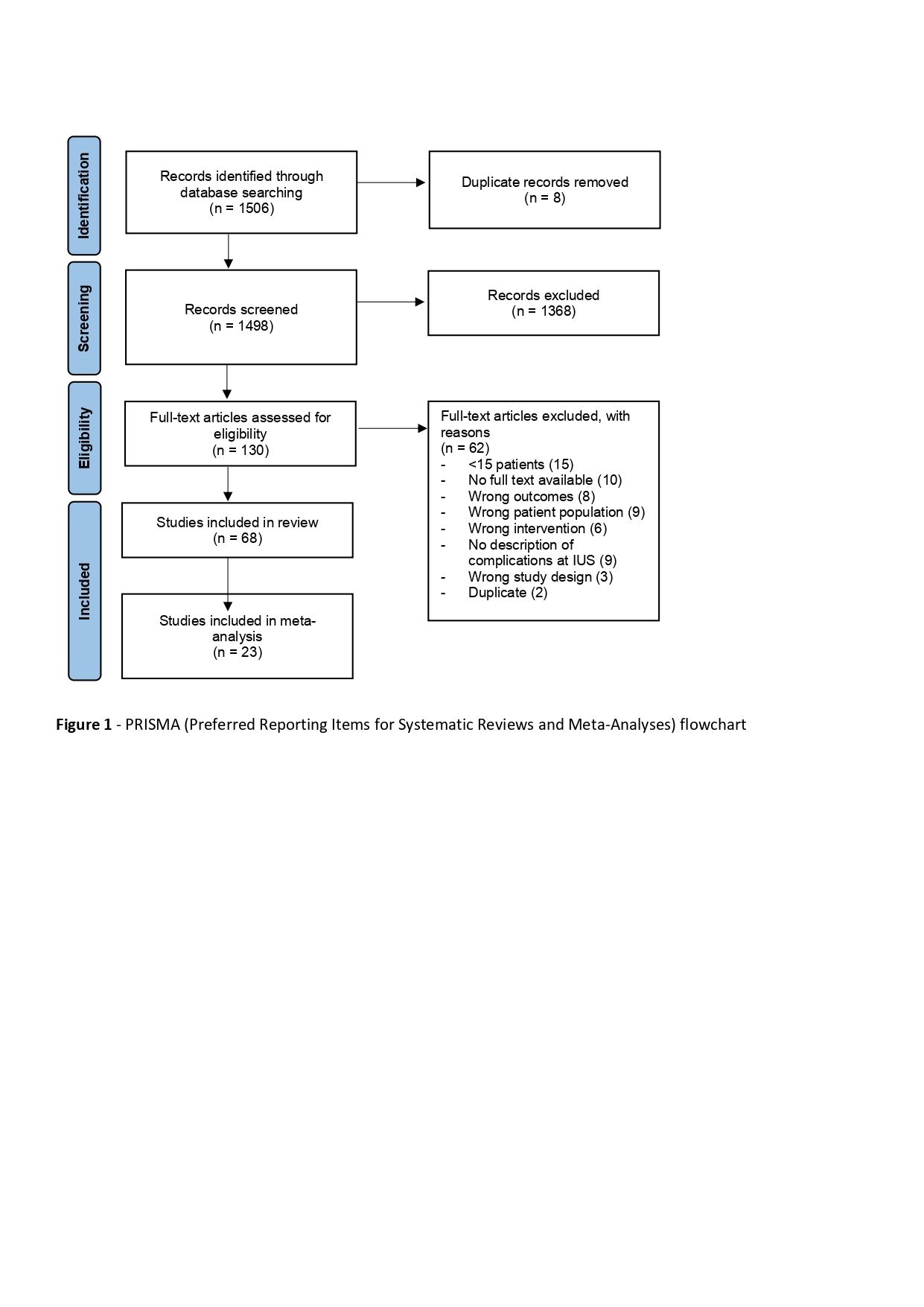P187 Intestinal ultrasound is accurate for detecting intra-abdominal complications in Crohn’s disease: a meta-analysis
Pruijt, M.(1)*;de Voogd, F.(1);Montazeri, N.(2);Jamaludin, F.(3);D'Haens, G.(1);Gecse, K.(1);
(1)Amsterdam UMC, Department of Gastroenterology and Hepatology, Amsterdam, The Netherlands;(2)Amsterdam UMC, Department of Gastroenterology and Hepatology- Biostatistical Unit, Amsterdam, The Netherlands;(3)Amsterdam UMC, Medical Library, Amsterdam, The Netherlands;
Background
The clinical course of Crohn’s disease (CD) is associated with development of complications including strictures and penetrating lesions such as fistulas and abscesses. Close disease monitoring and optimizing therapy can prevent these complications. Intestinal ultrasound (IUS) is a non-invasive cross-sectional imaging method ideal for frequent assessment of disease activity and intra-abdominal complications. In this meta-analysis we provide an updated assessment of the diagnostic accuracy of IUS and its advanced modalities in the detection of intra-abdominal complications in CD compared to endoscopy, MRI/CT, surgery and pathology.
Methods
We conducted a literature search in Pubmed/MEDLINE and EMBASE databases from 01-01-1970 up to and including 17-10-2022 for studies describing diagnostic accuracy of IUS in adult patients with CD related intra-abdominal complications. Quality of the included studies was assessed with the QUADAS-2 tool. A univariate random-effects model was used to calculate the diagnostic test accuracy variables, including the log diagnostic odds ratio and area under the pooled ROC (AUC for SROC). All data were calculated with 95% confidence intervals (CIs). Chi-squared (χ²) test was used to assess study heterogeneity with p < 0.05 indicating significant heterogeneity. Funnel plots were created to assess publication bias. All meta-analysis were performed using the R-package mada. We calculated pooled sensitivity and specificity in Meta-DiSc.
Results
We identified 1506 studies of which 68 were used for the systematic review. Twenty-three studies with 3863 patients were included in this meta-analysis with an overall moderate to high risk of bias. In total 6 meta-analyses were performed, both for conventional IUS (B-mode) and oral contrast IUS (SICUS) for diagnosing CD-related complications. Pooled overall log diagnostic odds ratio for strictures, fistulas and inflammatory masses by B-mode IUS were 3.56 (2,90-4.21), 3.84 (3.28-4.41) and 3.97 (3.30-4.64) and the AUC were 0.926, 0.896 and 0.960 respectively. Pooled overall diagnostic odds ratio for the diagnosis of strictures, fistulas and inflammatory masses by SICUS were 4.51 (3.28-5.73), 4.80 (3.46-6.14) and 5.46 (3.61-7.30) and the AUC were 0.955, 0.982 and 0.985, respectively. Significant heterogeneity was seen between studies reporting data on diagnosing strictures by B-mode IUS.




Conclusion
These results indicate that IUS is an accurate tool for the diagnosis of intra-abdominal complications related to CD. IUS as a non-invasive, point-of-care modality is recommended as the first-line imaging tool if there is a suspicion of CD-related intra-abdominal complications.


